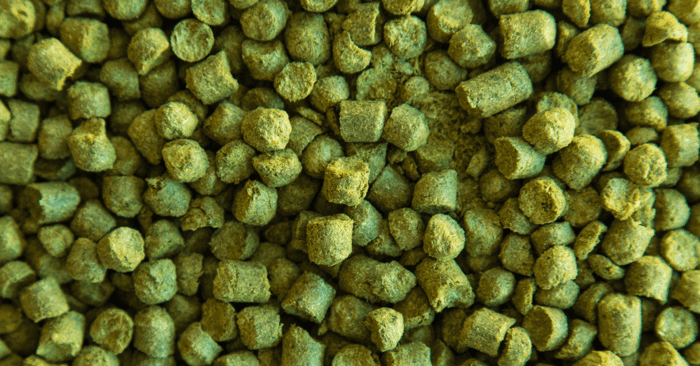The difference between good beer and exceptional beer often comes down to one critical factor that many home brewers overlook: fermentation temperature control. Whilst other brewing equipment might catch your eye first, temperature control during fermentation could be your most valuable investment.
Consider this: yeast produces the vast majority of flavour compounds in your finished beer. By maintaining optimal fermentation temperatures specific to your chosen yeast strain, you'll achieve a remarkable improvement in beer quality that's immediately noticeable.
Let's examine the scientific principles that make temperature control so crucial for brewing excellence.
Understanding Thermal Effects on Yeast Metabolism
Fusel Alcohol Formation at Elevated Temperatures
When fermentation temperatures exceed recommended parameters, yeast metabolism shifts towards producing unwanted compounds. Fusel alcohols – higher alcohols containing more than two carbon atoms – create harsh, solvent-like flavours that can render beer unpleasant to drink. These compounds, originally termed "fusel" (German for "bad liquor"), not only affect taste but may contribute to post-consumption discomfort.
Ester Production Correlation
Esters represent secondary metabolites that significantly influence beer character. Research demonstrates that a 15°C temperature increase can elevate ester production by up to 75% (Engan, S. Brewers Digest, 1974). This exponential relationship between temperature and ester formation underscores why precise control is essential for achieving your intended flavour profile.
Sub-Optimal Temperature Consequences
Metabolic Suppression
Insufficient fermentation temperatures dramatically slow yeast activity, potentially leading to incomplete attenuation. This creates conditions favourable for contamination whilst simultaneously reducing beneficial compound production, resulting in beers lacking complexity and character.
Exothermic Fermentation Management
Fermentation generates considerable thermal energy. Even with proper pitching temperatures, internal fermenter temperatures rise significantly during active fermentation. Professional breweries address this through sophisticated cooling systems, recognising that uncontrolled temperature rise compromises beer quality.
Clarification Through Temperature Manipulation
Flocculation Enhancement
Extended cold conditioning promotes yeast flocculation – the natural tendency for brewing yeast to aggregate and precipitate. Implementing a "cold crash" protocol, where beer temperature approaches 0°C, accelerates protein and yeast settling, producing brilliantly clear beer whilst minimising chill haze formation.
Metabolic Stress and Nutrient Depletion
Excessive fermentation temperatures accelerate yeast reproduction, potentially exhausting available nutrients before complete sugar conversion. This metabolic imbalance results in stuck fermentations and residual sweetness.
Thermal stress also increases yeast mortality, reducing the viable cell population required for complete fermentation. Dead yeast cells contribute off-flavours whilst leaving unfermented sugars in the finished product.
Style-Specific Temperature Requirements
Traditional European Styles
Many classical European beer styles depend on specific ester and phenol profiles achieved through controlled fermentation temperatures. German weissbiers, Belgian ales, and English bitters require precise temperature management to develop their characteristic flavour signatures. Fermenting too cold suppresses these essential compounds, producing technically sound but stylistically inappropriate beer.
Carbon Dioxide Influence on Flavour Retention
CO₂ evolution during fermentation acts as a stripping mechanism for volatile compounds. Lower temperatures reduce CO₂ solubility, retaining delicate aromatics that might otherwise be lost. This principle proves particularly valuable when dry-hopping during active fermentation, where slight temperature reduction preserves precious hop oils.
Conversely, gentle temperature elevation can facilitate removal of undesirable compounds such as hydrogen sulphide, utilising CO₂ stripping as a beneficial tool.
Batch-to-Batch Consistency
Temperature control provides the foundation for reproducible results. Consistent fermentation conditions ensure that successful recipes can be replicated reliably, eliminating the frustration of inexplicable flavour variations between batches.
Seasonal Independence
Proper temperature control liberates brewers from seasonal constraints. Rather than limiting lager production to winter months or restricting ale brewing to summer, controlled fermentation enables year-round production of any style with consistent quality.
Implementation Strategies
Professional-grade fermentation control doesn't require commercial-scale investment. Grainfather fermentation systems provide home brewers with the same precision temperature management used in commercial brewing, adapted for domestic scale operations.
The scientific evidence supporting temperature control is overwhelming. Investing in proper fermentation temperature management represents the most cost-effective upgrade for improving your brewing results.
Have questions about implementing temperature control in your brewery setup? Contact us – we're always keen to discuss brewing science with fellow enthusiasts.
L'équipe du Grainfather










